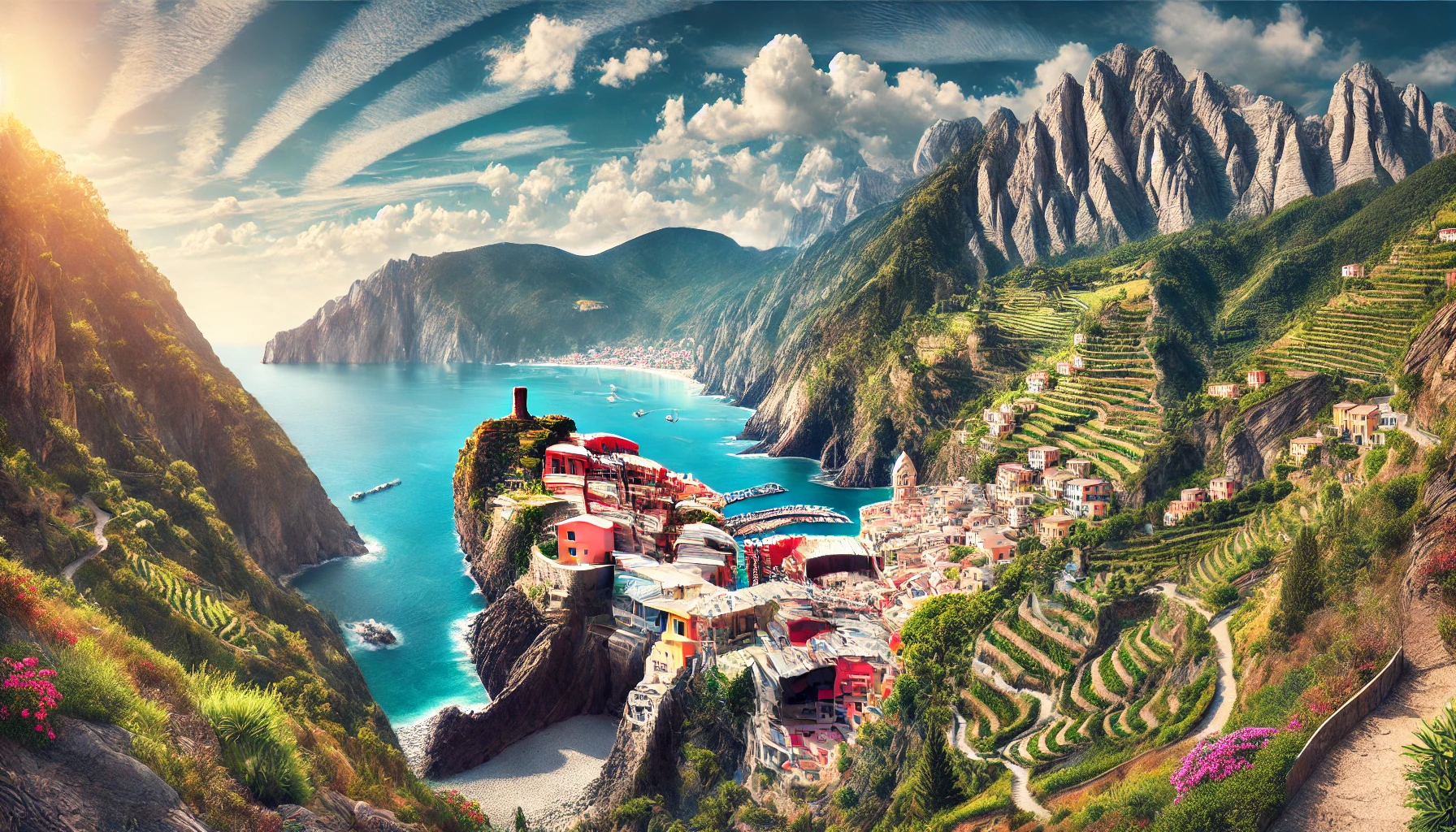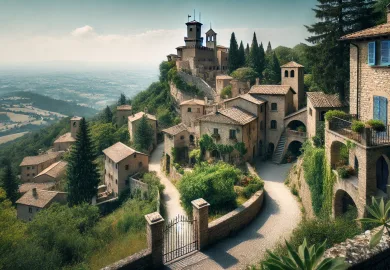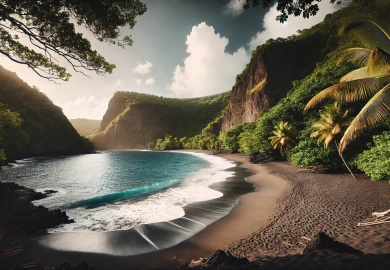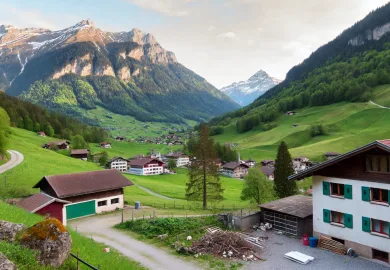
Italy, a country renowned for its rich history, exquisite cuisine, and cultural landmarks, is also home to some of the most stunning natural landscapes in the world. From the rugged cliffs of the Amalfi Coast to the serene lakes of Lombardy, hiking through Italy offers an unparalleled opportunity to experience the country’s diverse beauty up close. Whether you’re an experienced hiker or just looking to escape the hustle and bustle of the city, Italy’s trails offer something for everyone. Let’s embark on a journey through some of the most picturesque landscapes Italy has to offer, where every step reveals a new wonder.
Discover the Majestic Dolomites: A Hiker’s Paradise
The Dolomites, a UNESCO World Heritage site, are among Italy’s most iconic mountain ranges. Located in the northern region of the country, this area is a haven for hikers and outdoor enthusiasts. The dramatic limestone peaks, verdant meadows, and alpine lakes create a landscape that seems almost otherworldly.
One of the most popular trails in the Dolomites is the Alta Via 1, a long-distance hike that takes you through the heart of this mountain range. The trail spans over 120 kilometers, offering breathtaking views at every turn. As you hike through this route, you’ll pass through charming mountain villages, where you can experience the local culture and cuisine. The Alta Via 1 is challenging but rewarding, with each day bringing new landscapes and experiences.
For those looking for a shorter hike, the Tre Cime di Lavaredo is a must. This loop trail takes you around the three towering peaks that give the trail its name. The views are nothing short of spectacular, with the jagged peaks contrasting sharply against the blue sky. The trail is accessible to hikers of all levels, making it a perfect option for families or those with limited time.
Explore the Enchanting Cinque Terre: Coastal Beauty at Its Finest
The Cinque Terre, a collection of five colorful fishing villages perched on the rugged Ligurian coast, is one of Italy’s most famous hiking destinations. The Sentiero Azzurro, or Blue Trail, is the most well-known hike in this area, connecting all five villages along the coastline. This hike offers stunning views of the Mediterranean Sea, terraced vineyards, and the vibrant villages that dot the landscape.
Each section of the Blue Trail has its unique charm. Starting from Monterosso al Mare, the largest of the five villages, you can hike to Vernazza, often considered the most beautiful of the Cinque Terre. The trail between these two villages is moderately challenging, with steep ascents and descents, but the views of Vernazza’s harbor as you approach are worth every step.
Continuing along the trail, you’ll reach Corniglia, the only village not directly on the coast. Perched on a hilltop, Corniglia offers a different perspective of the coastline. The final stretches of the Blue Trail take you through Manarola and Riomaggiore, where the colorful houses seem to spill down the cliffs into the sea. The Cinque Terre is not only a hiking destination but also a cultural experience, with each village offering a glimpse into traditional Italian life.
Traverse the Stunning Path of the Gods: A Journey Along the Amalfi Coast
The Amalfi Coast, with its dramatic cliffs, turquoise waters, and picturesque towns, is a destination that has captivated travelers for centuries. One of the best ways to experience the beauty of this region is by hiking the Sentiero degli Dei, or Path of the Gods. This trail, which runs from Bomerano to Nocelle, offers some of the most breathtaking views of the Amalfi Coast.
The Path of the Gods is a relatively moderate hike, suitable for most fitness levels. The trail is well-marked, and as you walk along the cliffside, you’ll be treated to panoramic views of the coastline, the island of Capri in the distance, and the towns of Positano and Praiano far below. The landscape is dotted with wildflowers, olive groves, and terraced vineyards, adding to the trail’s charm.
Starting in Bomerano, a small village high in the mountains, the trail gradually descends towards Nocelle. Along the way, you’ll pass ancient stone houses, small chapels, and secluded viewpoints where you can stop and take in the scenery. The Path of the Gods is not just a hike; it’s a journey through the history and culture of the Amalfi Coast, where every step brings you closer to the soul of this enchanting region.
Discover the Serene Beauty of Lake Como: A Hike Through Tranquil Landscapes
Lake Como, nestled in the foothills of the Alps, is renowned for its serene beauty and luxurious villas. But beyond the glamour lies a network of hiking trails that offer a peaceful escape into nature. The Greenway del Lago di Como is one such trail, offering hikers a chance to explore the charming villages, lush gardens, and scenic viewpoints around the lake.
The Greenway is a relatively easy hike, making it suitable for all ages and fitness levels. The trail follows ancient paths and mule tracks that have been used for centuries, meandering through olive groves, forests, and along the lake’s shoreline. Along the way, you’ll pass through villages like Colonno, Sala Comacina, and Lenno, each with its unique character and charm.
One of the highlights of the Greenway is the view from the Sacro Monte di Ossuccio, a UNESCO World Heritage site. From here, you can enjoy panoramic views of the lake and the surrounding mountains. The trail ends in the town of Griante, where you can relax and take in the beauty of Lake Como. Whether you’re looking for a leisurely stroll or a more challenging hike, Lake Como’s trails offer something for everyone, all set against the backdrop of one of Italy’s most beautiful landscapes.
Experience the Untamed Wilderness of Sardinia: A Hike Through Rugged Landscapes
Sardinia, Italy’s second-largest island, is known for its rugged landscapes, pristine beaches, and ancient ruins. For those seeking an adventure off the beaten path, the Selvaggio Blu is the ultimate hiking experience. This challenging trail runs along the island’s eastern coast, through some of the most remote and untouched parts of Sardinia.
The Selvaggio Blu is not for the faint of heart. It’s considered one of the toughest hikes in Italy, with steep climbs, technical scrambles, and long days on the trail. However, the rewards are well worth the effort. As you hike through this wild landscape, you’ll encounter towering cliffs, hidden coves, and crystal-clear waters. The trail takes you through dense forests, over rocky plateaus, and along narrow ledges, offering a true test of your endurance and hiking skills.
One of the most unique aspects of the Selvaggio Blu is the opportunity to explore Sardinia’s ancient history. Along the trail, you’ll come across Nuragic ruins, ancient shepherd’s huts, and caves that have been used for centuries. The trail ends in the town of Cala Gonone, where you can relax and soak in the beauty of the Mediterranean. The Selvaggio Blu is more than just a hike; it’s an adventure through the wild heart of Sardinia, where nature reigns supreme and every step is a journey into the unknown.
Conclusion: Italy’s Trails Offer a Diverse and Unforgettable Hiking Experience
Italy’s diverse landscapes offer something for every hiker, from the towering peaks of the Dolomites to the rugged coastlines of Sardinia. Whether you’re looking for a challenging adventure or a leisurely stroll through picturesque villages, Italy’s trails provide an opportunity to connect with nature and experience the country’s beauty in a unique way. So lace up your hiking boots, pack your backpack, and set out on a journey through Italy’s fantastic landscapes. Each trail offers a new perspective, a new experience, and memories that will last a lifetime.








